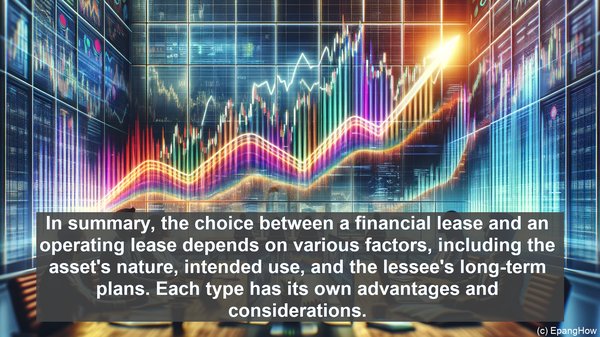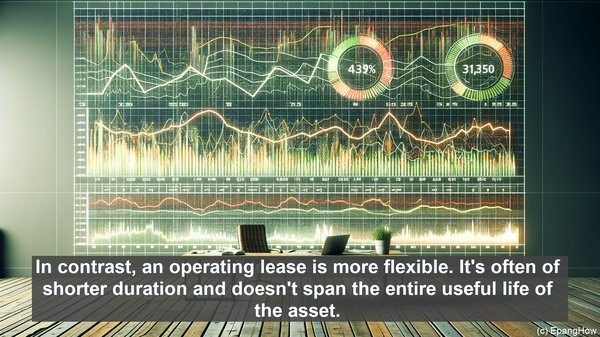Introduction: The World of Leasing
Hello, everyone! Leasing is a prevalent practice in the business world, enabling companies to acquire assets without the need for substantial upfront investments. However, within the leasing landscape, two primary types stand out: financial leases and operating leases. Today, we’ll explore the nuances between these two arrangements, as they can have significant implications for businesses and lessees.
Financial Lease: A Closer Look
Let’s start with the financial lease. This type of lease is often considered more akin to a loan. When a business enters into a financial lease, it essentially commits to a long-term arrangement, typically covering the majority of an asset’s useful life. The lessee is responsible for the maintenance, insurance, and other costs associated with the asset. Importantly, the lessee also assumes the risk of obsolescence. From an accounting perspective, a financial lease is treated as a liability on the lessee’s balance sheet, with corresponding asset recognition.
Operating Lease: A Different Approach
In contrast, an operating lease is more flexible. It’s often of shorter duration and doesn’t span the entire useful life of the asset. With an operating lease, the lessor retains the responsibilities for maintenance, insurance, and other costs. This type of lease is commonly used for assets that have a shorter shelf life or are subject to rapid technological advancements. In terms of accounting, an operating lease is not recorded as a liability on the lessee’s balance sheet. Instead, the lease payments are treated as operating expenses.

Factors Influencing the Choice
When deciding between a financial lease and an operating lease, several factors come into play. Firstly, the intended use of the asset: if it’s a core, long-term requirement, a financial lease may be more suitable. On the other hand, if the asset is for a specific project or has a high likelihood of becoming obsolete, an operating lease might be the better option. Additionally, cash flow considerations, tax implications, and the lessee’s risk appetite all play a role in the decision-making process.
Implications for Businesses
Both financial and operating leases have their own implications for businesses. With a financial lease, while the lessee has the advantage of eventual ownership, they also bear the risks associated with the asset’s value and obsolescence. On the other hand, an operating lease provides more flexibility, allowing businesses to upgrade to newer assets without the burden of ownership. However, it’s essential to note that operating leases may have higher overall costs in the long run.

